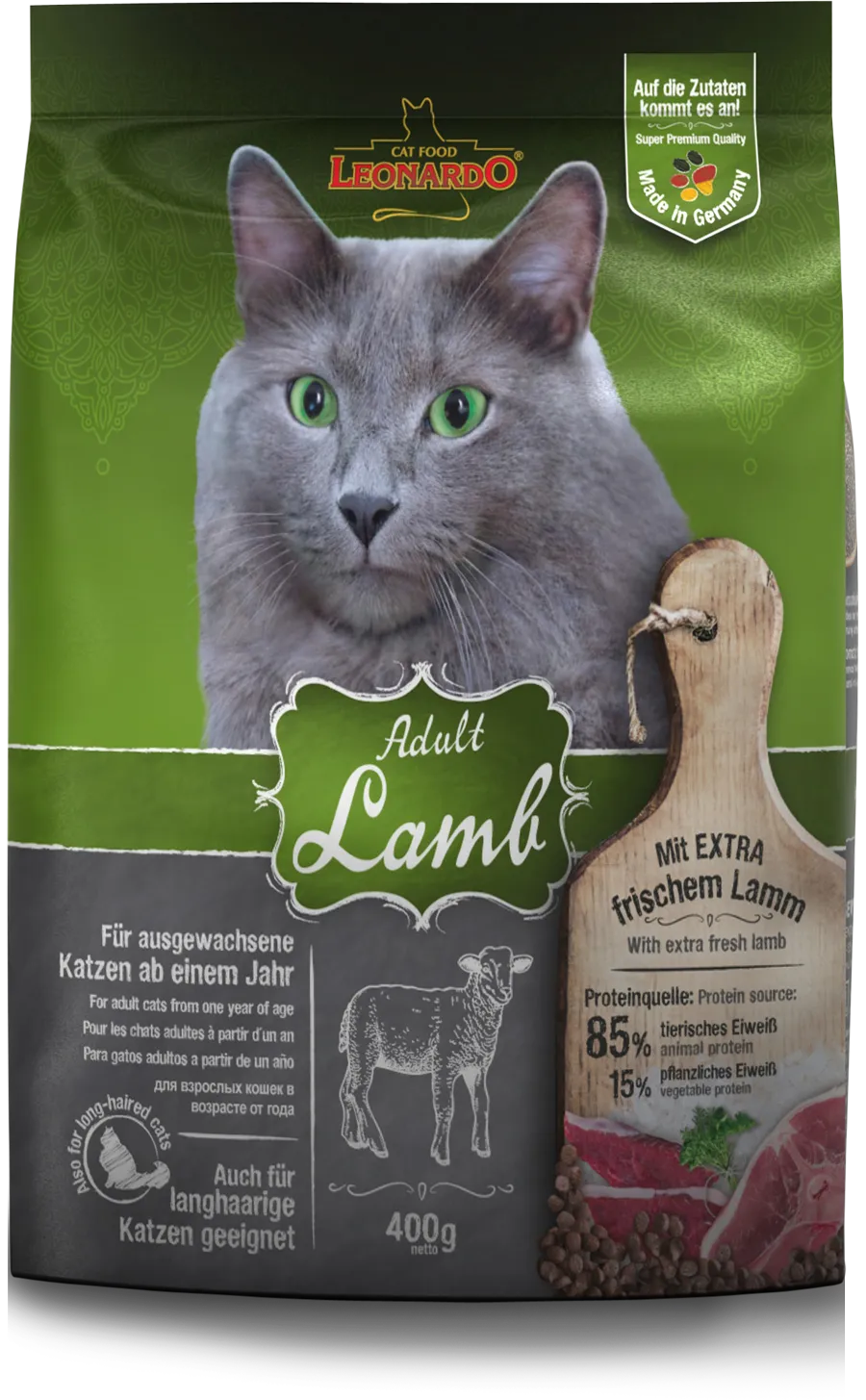Leonardo
Adult Lamb
Adult
Regular
Indoor and Outdoor
Click to reveal the score breakdown
Tap to view ingredients, guaranteed analysis and more
Ingredients
Fresh lamb meat
Liver
Lung
30%
Lamb protein (dried)
14%
Poultry protein (low ash, dried)
14%
Rice
Corn
Poultry fat
Poultry liver (hydrolysed)
Rye (malted)
and also:
Egg (dried), Marine zooplankton (ground, Krill,) (2.5%), Brewers’ yeast (dried,) (2.5%), Fish meal from seafish, Grape seeds extract;, Chia seeds (1.3%), Carob pods (dried), Sodium chloride, Potassium chloride, Chicory inulin, Herbs, Dried Chamomile, Fennel, Mistletoe, Caraway, Gentian (0.05%)
Vitamins and Additives
Vitamin A 15000 IU
Vitamin D3 1500 IU
Vitamin E 150 mg
and also:
Vitamin C (as ascorbyl monophosphate) (245mg), Taurine (1400mg), Copper (as copper (II) sulphate, pentahydrate) (15mg), Iron (as ferrous (II) sulphate, monohydrate) (200mg), Iron (as iron (III) oxide) (385mg), Manganese (as manganese (II) oxide) (50mg), Zinc (as zincoxide) (150mg), Iodine (as calciumiodate, anhydrous) (2.5mg), Selenium (as sodiumselenite) (0.15mg), Lecithin (2000mg), Natural tocopherol extracts (natural vitamin E) (80mg)
Guaranteed Analysis
Crude Protein
32%
Crude Fat
20%
Crude Fiber
2.3%
Moisture
10%
Crude Ash
8.5%
Calcium
1.4%
Phosphorus
1%
Magnesium
0.09%
Product last updated: May 16, 2024, 12:26 PM
Please hold on while we’re getting the best offers for you
7190










